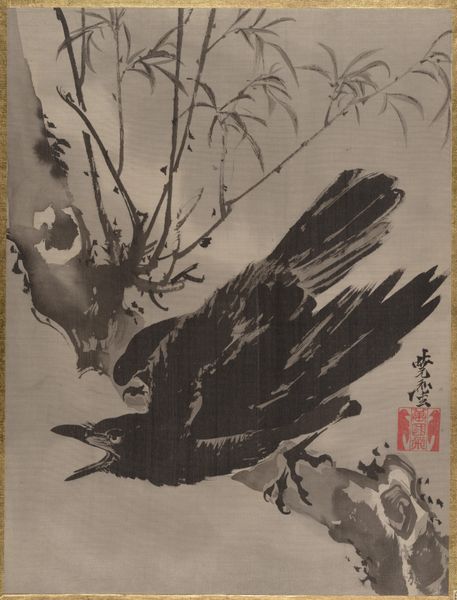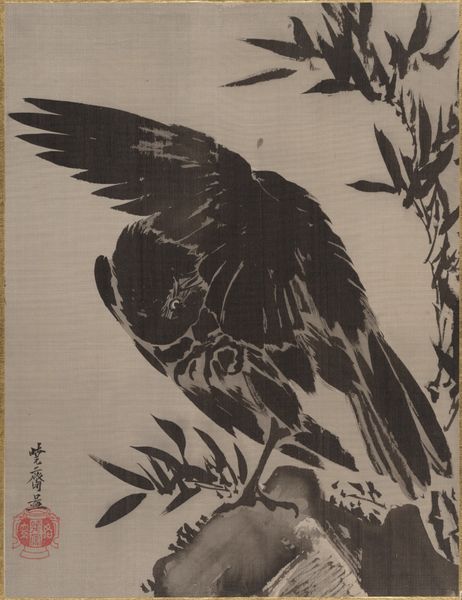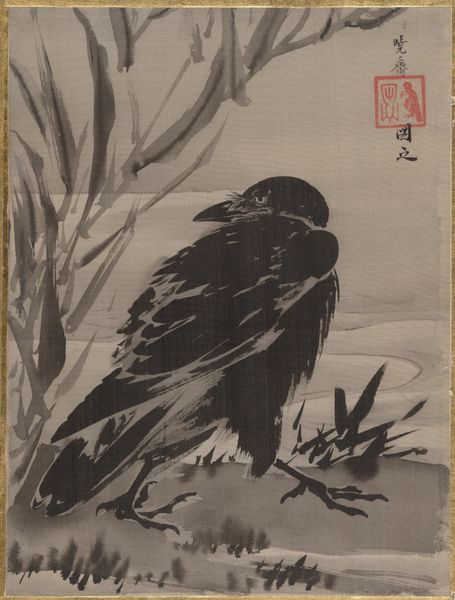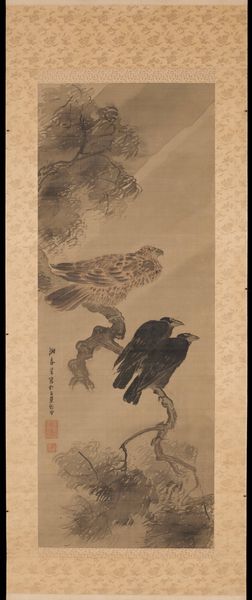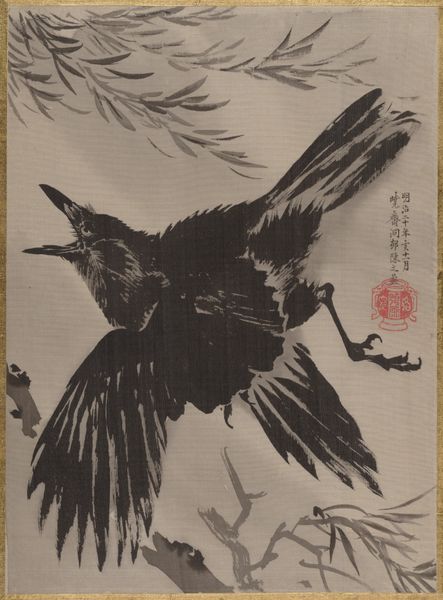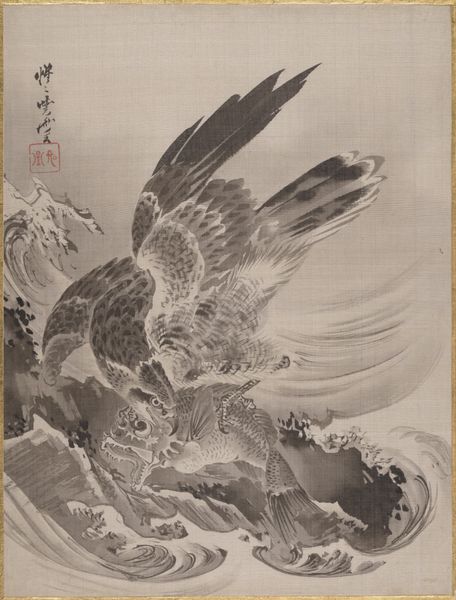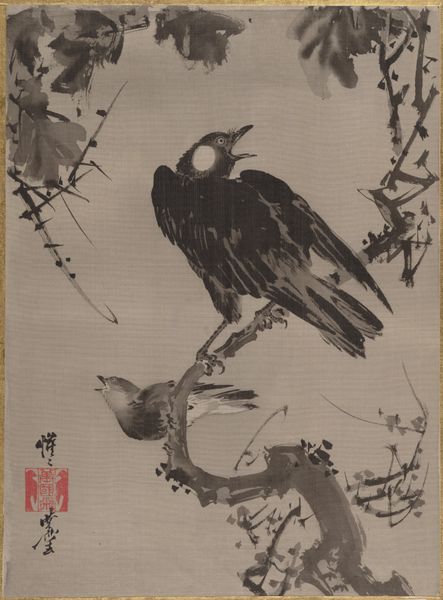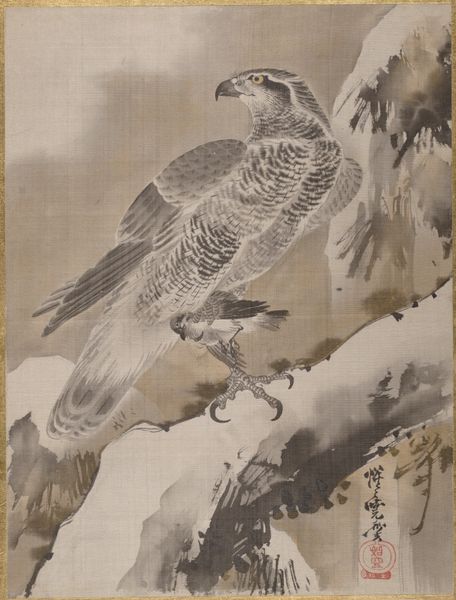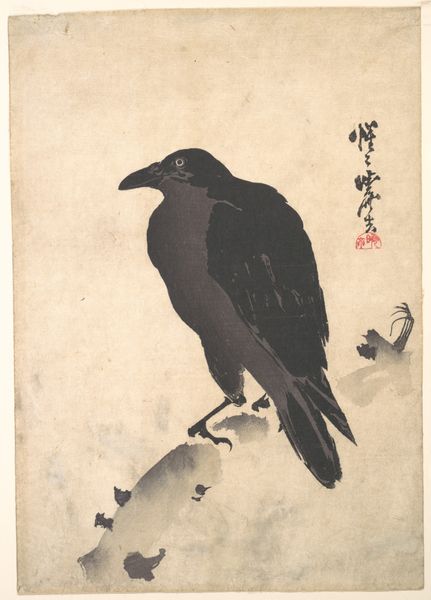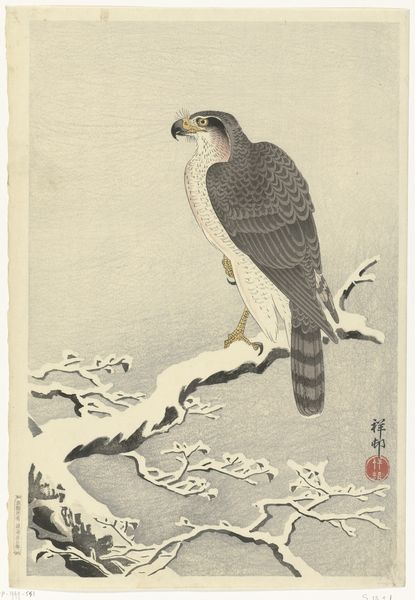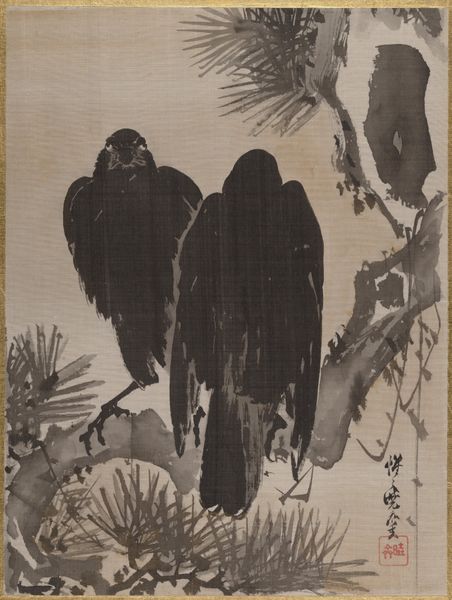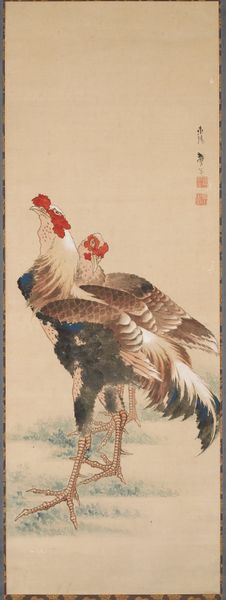
Dimensions: 14 1/4 x 10 3/4 in. (36.2 x 27.3 cm)
Copyright: Public Domain
Curator: Here we have Kawanabe Kyōsai’s “Crow on a Branch,” made sometime between 1877 and 1897 during the Meiji period. It's an ink drawing, likely a woodblock print, rendered with watercolor, now residing at the Metropolitan Museum of Art. Editor: My first impression is stark vulnerability. The muted palette emphasizes the bold black brushstrokes of the bird. It's perched precariously, preening perhaps, but something about its stance evokes unease. Curator: Kyōsai masterfully employs the crow, a complex symbol throughout cultures, laden with conflicting meanings. Often a harbinger of doom, associated with death… but also carrying connections to wisdom, magic, even creation in some traditions. Editor: I’m immediately thinking of ecological themes, even without specific context. The skeletal branch suggests environmental decay, which mirrors social decay, creating tension within Japan's rapid modernization at the time. Were old traditions being sacrificed for progress? Curator: Precisely. The crow's mournful pose reinforces that unease you initially picked up on, it embodies the anxieties of a society wrestling with transformation. Artists of the Ukiyo-e tradition were very interested in depicting those changing dynamics in Japanese culture. Editor: Ukiyo-e prints were popular, relatively accessible art—so Kyōsai's choice of this medium is significant. He is not only offering a critique but aiming to connect with a broad audience navigating these socio-political currents. This crow, therefore, becomes a poignant messenger for his community. Curator: Absolutely. Furthermore, the singular focus, the artist places all attention on the creature, amplifying its symbolic importance. Think of the crow as a concentrated metaphor—holding layered meanings that would deeply resonate for a population contemplating its future in a shifting world. Editor: It's interesting how, even now, a century later, the imagery is potent, tapping into lingering anxieties about environmental decline and the loss of cultural memory. It stands as a powerful commentary, echoing anxieties that stretch far beyond its original timeframe. Curator: Looking closely has renewed my appreciation for the layered symbolism Kyosai masterfully embeds within simple images. Editor: And for me, thinking about the work politically, this is more than an illustration; it's a historical document—evidence of Kyōsai's participation in ongoing debates around Japanese identity and modernization.
Comments
No comments
Be the first to comment and join the conversation on the ultimate creative platform.
